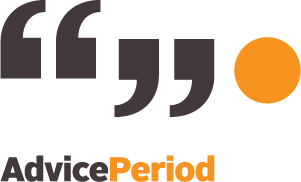Saving for college isn’t one-size-fits-all. Your ideal approach depends on your specific financial situation—your income, goals, how much flexibility you want and how soon those education expenses will come due. With the cost of college continuing to rise each year, planning ahead has never been more important. And while 529 plans are one of the most well-known tools for education savings, they’re not the only option.
529 Plans: Purpose Built for College
Introduced in 1996, 529 plans have helped families build dedicated college savings with some powerful tax advantages. Earnings grow tax-free, and withdrawals used for qualified education expenses (like tuition, room and board, and textbooks) are also free from federal income tax and often state tax as well.
Plans come with generous lifetime contribution limits—typically well over $300,000 in most states—and don’t have annual contribution ceilings. In addition, if one child doesn’t use the funds, the account can often be transferred to another family member, or even rolled into a Roth IRA for the beneficiary under certain conditions (just be aware that specific rollover requirements apply).
While 529s offer many advantages, they do come with tradeoffs. Funds must generally be used for qualified education expenses—otherwise, you may face income tax and a 10% penalty on earnings. Investment choices are often limited to those offered by the plan, and if your child doesn’t pursue higher education, withdrawing the funds can become complicated and costly, even with recent flexibility improvements.
Taxable Brokerage Accounts: Funding on Your Terms
If you’re looking for total flexibility, a standard brokerage account offers it. You can invest in a wide range of assets—stocks, mutual funds, ETFs—and use the money for anything, not just education. This can be especially helpful if you want the option to pivot down the road or if your child’s education path is still uncertain.
However, unlike 529s, brokerage accounts don’t offer tax-free growth or withdrawals. Any gains are subject to preferential capital gains taxes, but dividends or interest earned could impact your overall tax bill. Also, depending on who owns the account, the assets may factor more heavily into financial aid calculations.
Prepaid Tuition Plans: Lock It in Early
Some states and schools offer prepaid tuition plans that let you pay in advance for future college attendance—essentially locking in today’s tuition rates. This can be a compelling option if you’re planning early and feel confident your child will attend a participating school.
Unlike traditional 529 savings plans, prepaid plans aren’t investment based—the value isn’t tied to market performance. Instead, they’re intended to cover a set amount of future tuition based on what you’ve prepaid today. That can make them a lower-risk option for families who value stability over growth potential.
But prepaid plans can be restrictive. If your child decides to go to a school that isn’t part of the plan, the plan’s value may be limited. Not all states offer prepaid programs, and some have closed to new enrollees. Many also exclude costs like room and board, books, and fees, which are eligible under traditional 529 plans.
Custodial Accounts: Flexible Funds for Their Future
Custodial accounts like UGMA (Uniform Gifts to Minors Act) and UTMA (Uniform Transfers to Minors Act) accounts make it easy to transfer assets to a child and invest those funds for the future. They’re not restricted to education expenses, so the money could eventually go toward tuition—or something else entirely, like a first car or a down payment on a home. These accounts also offer broad investment options and are relatively simple to set up.
But that flexibility comes with a few caveats. When the child reaches the age of majority (between 18 and 25, depending on state), they gain full legal control of the funds—regardless of your original intentions. Additionally, assets in custodial accounts are considered the student’s for financial aid purposes, which can have a bigger impact on aid eligibility than a parent-owned account.
Roth IRAs: Not Just for Retirement
Roth IRAs are designed for retirement, but they can also be a helpful education funding tool, especially if you already have a well-funded Roth but haven’t built up a 529.
Contributions (not earnings) can be withdrawn at any time, for any reason, without taxes or penalties. And if you also use earnings for qualified higher education expenses, you’ll avoid the 10% early withdrawal penalty (though income taxes will apply).
That said, Roths have relatively low contribution limits—$7,000 per year in 2025, with a $1,000 catch-up for those 50 and over1—and are subject to income eligibility rules. Pulling from a Roth also reduces your retirement nest egg, and withdrawals count as income on the FAFSA, which could affect financial aid in future years.
Still, if you already have a sizeable Roth, it can provide added flexibility when college bills start rolling in.
Trump Accounts: A Financial Head Start
Trump Accounts—newly introduced under federal law—are long-term savings vehicles designed to help children build wealth from an early age. Each account receives a $1,000 federal contribution at birth (for eligible and qualifying children), and families can contribute up to $5,000 annually. The funds grow tax-deferred and can be used later in life for expenses like college, a first home or retirement.
While these accounts aren’t as education-specific as 529s—and withdrawals for college are still taxed as income—they can be a great supplement to your broader savings strategy, especially if you’re looking to give your child a strong financial foundation.
A Strategy That Fits Your Family
While 529s remain a cornerstone of college planning for many families, they’re not the only path forward.
Taxable brokerage accounts, prepaid tuition plans, custodial accounts, Roth IRAs—all these strategies can play a role, depending on your goals, timeline and broader financial picture. Combining multiple strategies can also help create more flexibility, potential tax advantages and added peace of mind.
Your wealth advisor can work with you to tailor an education funding strategy that fits your specific situation and plans, so you can feel more prepared and confident as you invest in your family’s future.
Sources:
1401(k) limit increases to $23,500 for 2025, IRA limit remains $7,000”
This material is provided for informational and educational purposes only. It does not consider any individual or personal financial, legal, or tax circumstances. As such, the information contained herein is not intended and should not be construed as individualized advice or recommendation of any kind. Where specific advice is necessary or appropriate, individuals should contact their professional tax, legal, and investment advisors or other professionals regarding their circumstances and needs.
Tax laws and regulations are complex and are subject to change, which can materially affect investment results. Some states do not conform with federal tax law as it pertains to 529 plans. The information is deemed reliable, but we do not guarantee accuracy, timeliness, or completeness. It is provided “as is” without any express or implied warranties.
There is no assurance that any investment, plan, or strategy will be successful. Investing involves risk, including the possible loss of principal. Please consider the investment objectives, risks, charges, and expenses associated with any investment related products before investing and discuss with a qualified professional. Past performance does not guarantee future results, and nothing herein should be interpreted as an indication of future performance.
AdvicePeriod is another business name and brand utilized by both Mariner, LLC and Mariner Platform Solutions, LLC, each of which is an SEC registered investment adviser. Registration of an investment adviser does not imply a certain level of skill or training. For additional information about Mariner, LLC or Mariner Platform Solutions, LLC, including fees and services, please contact us utilizing the contact information provided herein or refer to the Investment Adviser Public Disclosure website (www.adviserinfo.sec.gov).
For additional information as to which entity your adviser is registered as an investment adviser representative, please refer to the Investment Adviser Public Disclosure website (www.adviserinfo.sec.gov) or the Form ADV 2B provided to you. Investment adviser representatives of Mariner, LLC are generally employees. Investment adviser representatives of Mariner Platform Solutions, LLC dba AdvicePeriod, are independent contractors.




